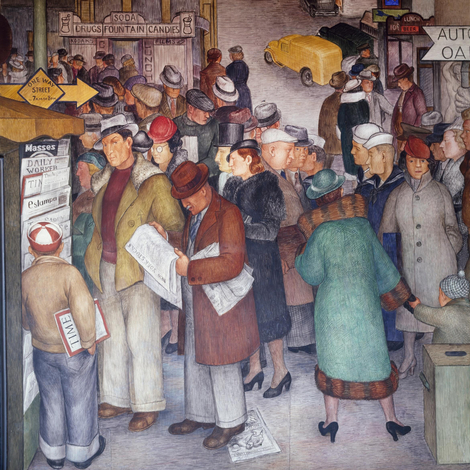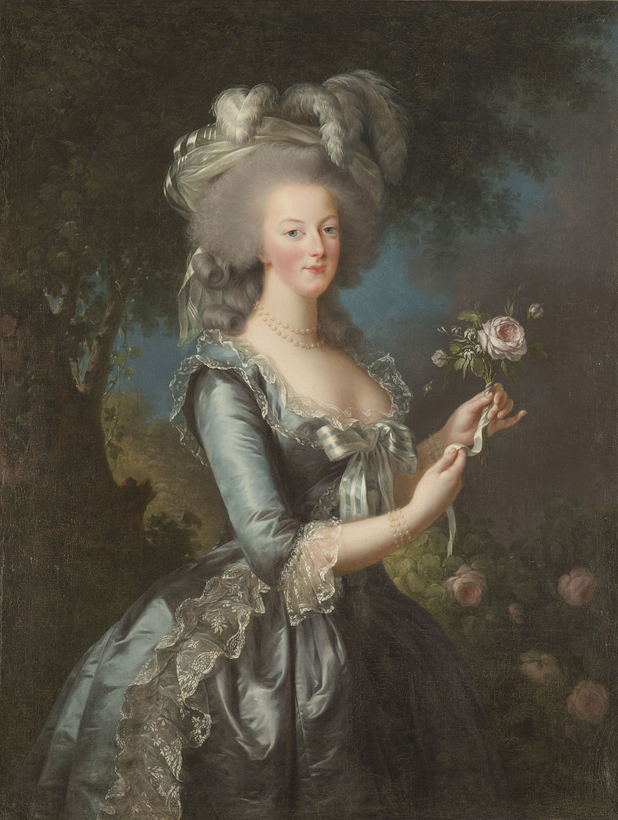When Marie Antoinette arrived at Versailles at 10 A.M. on May 16, 1770, she was a graceful, not very tall 14-year-old with newly straightened teeth. Three hours later she was married to the dauphin, the future Louis XVI, king of France. Life at Versailles was a spectacle, and the young bride’s role was essentially performative. Her powdered hair, rouge, and jewels were required elements of the court uniform, and as a teenager she was no more able to choose her clothes and décor than she could control how she spent her time. Once she became queen, in 1774, she was able to exert herself.
Opening today at London’s Victoria and Albert Museum, the exhibition “Marie Antoinette Style” invites visitors to discover the queen through her evolving taste in decoration and self-adornment. Marie Antoinette did not invent trends so much as make aesthetic choices that were quickly adopted as the fashion. The show analyzes those transitions, the way silhouettes moved from a panniered court style to robes à la polonaise and à la turque, and then to something altogether more shocking—simple muslins. There is a swoony fairy-tale quality to the queen’s jewels, shoes, fans, feathers, rouge pots, and perfume bottles. This collection of 250 objects includes rare historical artifacts as well as more recent works inspired by the ill-fated queen.

At the start of her reign, Marie Antoinette was frivolous in her taste—a greedy girl with too much money. She liked pastel colors, flowers, and having her initials emblazoned on everything. But with each decision her eye developed. While her love of flowers and pastels remained, her projects with the architect Richard Mique—at Versailles, the Petit Trianon, and her much misunderstood play village, the Petit Hameau—taught her the importance of neoclassical proportion and, crucially, restraint. Her decorative schemes in the private apartments and at the Petit Trianon achieved the critical tension between line and lightness that still defines elegance. This newfound simplicity was also expressed in the white muslin dresses she scandalously chose to wear.

The queen was a known people pleaser who tended to be generous, and in 1776 she had to appeal to the king to settle her debts, a pattern of behavior that would have tragic consequences. Marie Antoinette did not cause the deficit that brought about the French Revolution—France was well on its way to going broke before she entered the country. Yet her spending appeared in sharp relief against the poverty and suffering of her subjects, which made her the focus of public hatred—ultimately it was her greatest taste mistake.
Was Marie Antoinette guilty? That is a matter of one’s personal opinion; the poor were plainly starving to death. What is certain is that the humiliations imposed on her were sadistic. Stripped of her title and her friends, the queen was imprisoned in a shabby cell where she experienced untreated uterine bleeding. Falsely accused of sexually abusing her own son, then sentenced to death for high treason, Marie Antoinette was executed the following day, on October 16, 1793, at the age of 37. (The king had already been executed in January of that year.) The fairy tale was well and truly over, and the Revolution raged on, wiping the French monarchical system off the face of the earth.

Marie Antoinette’s wardrobe was ransacked, her furniture sold at auction. The new revolutionary elite could not be associated with the royal style of the ancien régime, and it died, in the flash of a guillotine blade, along with its queen. English buyers flocked to France, and Marie Antoinette’s precious possessions became sacred relics of the royalist cause. This ghoulish provenance gives these pretty things an inescapable and tragic shadow.
“Marie Antoinette Style” is on at the Victoria and Albert Museum, in London, until March 22, 2026
Sarah Hyde is a London-based writer

